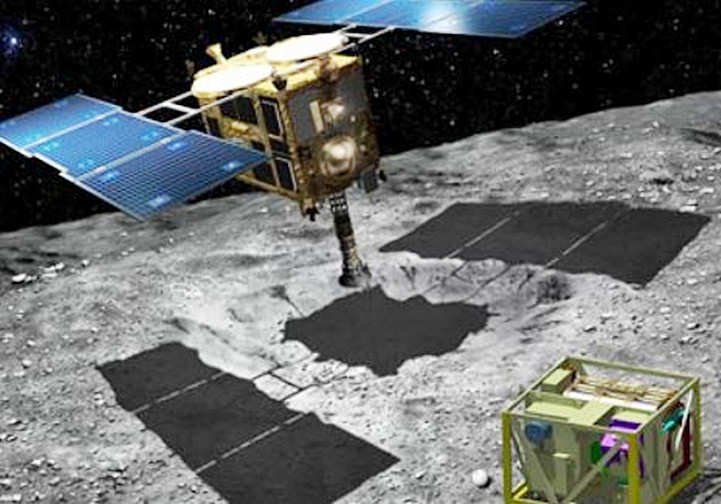Japan has, for the second time, landed a spacecraft on an asteroid, becoming the only country on Earth to have achieved such a remarkable feat.
The Japan Space Agency (JAXA) said its Hayabusa 2 spacecraft touched down on the near-Earth asteroid 162173 Ryugu on Feb. 21. This diamond-shaped asteroid has a diameter of less than one kilometer but is classified as a potentially hazardous asteroid of the Apollo group.
There are fears Ryugu might one day collide with the Earth, but recent observations estimate it will miss hitting our planet by only 59,000 miles. While not a "planet killer," Ryugu could still inflict catastrophic damage on the Earth were it to hit.
The Hayabusa 2 sample return mission will tell scientists more about the composition of this dangerous asteroid in the hope that countermeasures might be developed to stop it should future observations indicate an impact with the Earth.
JAXA confirmed the successful touchdown of Hayabusa 2 on Ryugu at 5:52 p.m. ET, early Friday morning in Japan. The space agency also live streamed the event.
Hayabusa 2 was launched in December 2014 and rendezvoused with Ryugu in June 2018. It has been orbiting the asteroid since.
Over the last few months, the spacecraft has been surveying Ryugu's surface. Images of the space rock's surface allowed scientists to select ideal landing sites.
There was no word on whether rock and dust samples were collected by Hayabusa 2. Like its predecessor Hayabusa, which landed on the asteroid Itokawa in November 2005, Hayabusa 2 will collect samples from the asteroid in the form of tiny grains of asteroidal material. It will then return these samples to Earth in 2020.
"The Doppler data showed the behavior as expected and cheers went up with a clap!," said a tweet from Hayabusa 2's account.
Hayabusa 2 didn't land so much as delicately brushing the surface of Ryugu much in the same way Hayabusa did at Itokawa. Prior to its landing, Hayabusa 2 fired a tantalum pellet at the asteroid surface. The impact of this pellet on the surface created a plume of dust and debris. It was these materials that Hayabusa-2 and its Sampler Horn instrument scooped-up.
The last sample retrieval will involve gathering excavated material dislodged by the impactor.






